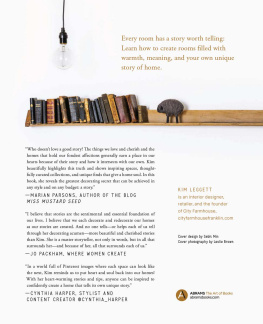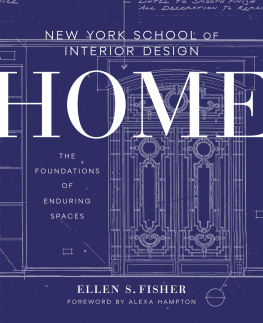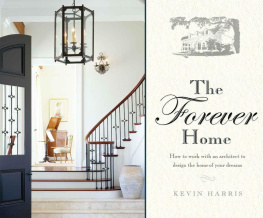A Tour Of Insanity:
A Manifesto Of Better Home Design
Insane Architect: MattZ
Tour Guide: KellyM
Chapter 9 - Garages: Attached or Detached
Chapter 10 - Benches By Front Doors Are Mandatory
Chapter 11 - Bitch Stoops - Stop It
Chapter 12 - Attics - Why?
Chapter 13 - Smart Technology: Love It Or Hate It
Conclusion
U rban planning and home architecture is, for the most part, a masterful execution of intricately woven coordinates saturated in community features that promote accessibility to utilities allowing neighborhoods to capitalize on the goods and services of their community. You would think that the same care of planning would go into the form and function of our home design, or at the least, evolved over the years.
Insanity is defined as doing the same thing over and over while expecting different results. People, we are certifiable when it comes to the aesthetics and architecture of our home design models. Our homes are getting smarter. It all started with the little personal secretaries perched on the counter, her name is Alexa. We scream at Alexa to fetch us this or that or even argue with her when we are bored (yes, I know youve done it).
Today, we have smart appliances that speak to each other without human intervention. The thermostat will keep track of when you are home and tell you ways to conserve energy, saving you heaps of money. The sprinkler system will tell you if there are any leaks and where they are located. The refrigerator can team up with an app on your phone and make up your grocery list; Jetsons eat your heart out.
But, with all these advancements in technology, here we are, doing the same shit different day with critical components in and outside our home. This book is a tour through the insanity that we glide through every day, most days without thinking about it - thats the problem.
I know you have scanned through a room and fixated on something, after successfully remembering why you entered the room in the first place and thinking - Why Is This? What Function Can This Possibly Serve? We are here to answer those questions and provide solutions to inspire change in an area that seems to be explained by - Its just always been that way .
If you are looking for nirvana enlightenment and viable solutions, this book is not for you-walk away. We instead illuminate interesting facts as to why things are the way they are to act as kindling for fiery, intriguing conversations at dinner parties or vetting the right dating partner, or even a coffee table book to break the awkward silences when in-laws are visiting.
In the spirit of entertainment, we say its time for a revolution on how we blindly accept the old ways and tolerate the non-functional annoyance factor in home design and invest in a way to stop the insanity. Lets take a tour, shall we?
Chapter 1 - Carpeted Bathrooms: But Why The Rugs, Though?
T he average person spends 92 days of their life on the porcelain throne. That doesnt even take into account the amount of time that is spent primping ourselves up for work or a date or to seek sanctuary from the family at Thanksgiving dinner.
Bathrooms are a highly-coveted space. You dont honestly know who someone is until they are confined in a home with five people and one bathroom - its emotional. So, the question is, with the paramount importance of the quality time we spend in the bathroom, why is it not better matched with our needs?
Who Started The Insanity?
T he concept of detouring waste from the home goes back about 5,000 years with urban planning in the Indus Valley, Rome, Egypt, and several other ancient civilizations. The actual swirling bowl came much later in the 1500s from the godson of Queen Elizabeth I and the elbow grease of the Industrial Revolution, back then; it was commonplace for 20 people to handle business in between flushes ( Ewww ).
But, when did the actual bath room come into play? The room that sheltered our bath and bidet - to privatize our personal releases and ponder our thoughts in peace? More importantly, who started the TILE floors? Isnt it always the bloody Romans?
Bathing publicly before entering a sacred space or socializing in large thermal baths were practiced in many places of the world; however, it was the wealthy Romans that separated the public and private bath, taking the bathroom to another level. Although they would still ritually bathe in public, Romans introduced a personal space in their home that distinguished private and public hygiene and relaxation habits.
Romans that could afford it would build a separate room containing a private heated bath, including ointment, incense, combs, mirrors, and even a working toilet system. Romans were skilled architects, and their innovations were unmatched for centuries after, which is why every bathroom positioned itself in their likeness.
Romans are credited with molding cement from the celebrated monumental masterpieces showcased in museums next to pictures of their majestic archways to the lowly bathroom floor tiles. AH-HAH, our tile villain!
Privatizing Bathrooms: Sharing Is Not Caring
B efore the 19th century , disease was thought to be spontaneously combusted chaos or spawned upon you because of unfavorable, sinful acts that you participated in or it was quite possible that you were possessed by demons. During the 19th century, we explored a new theory of how germs were spread and put rhyme to the reason, basic hygiene. This was a turning point in medical history as hospitals and treatments became more sophisticated, vaccines were developed, and penicillin ensured our survival. This century survived epidemics of:
Cholera
Smallpox
Typhus
Yellow fever
Plague; and
Scarlet fever
Disease transmission study, cleanliness (with soap), and hygiene were all the rage, and so were private bathrooms. Private bathrooms were becoming a prominent staple in every household (not just the wealthy ones) for good health.
The industrial revolution provided access to hot and cold running water, flushable toilets, and full-size luxurious bathtubs, sinks, and showers. Gas heaters and plumbed houses sprang up all over the country, and in 1889, the electric water heater was introduced, blowing the minds of every patron.
There was now a private restroom that all family members could use with intricate tiled patterns and spruced up accessories replacing the old wooden elements (#trending). A new world opened up and formed the foundation for the bathrooms that we know today, sort of.
The Age Of Carpeted Bathrooms
W hen you utter the words carpet and bathroom in the same sentence, peoples buttholes actually pucker and their answer is so immediate it slaps you in the face - NO! There are some really strong opinions out there about carpets in bathrooms. So, how did this start?
Next page














